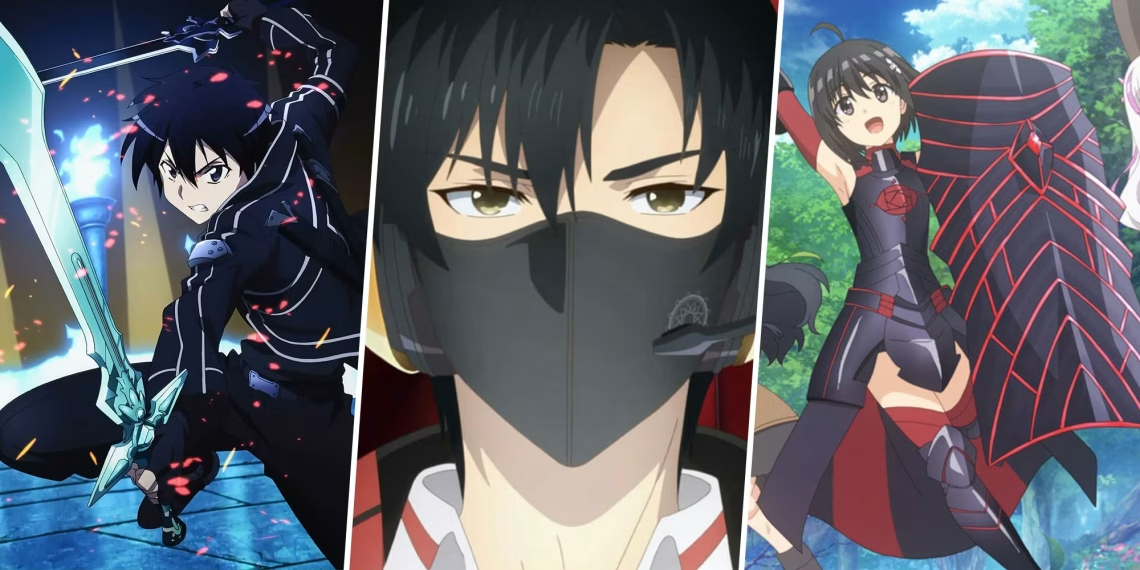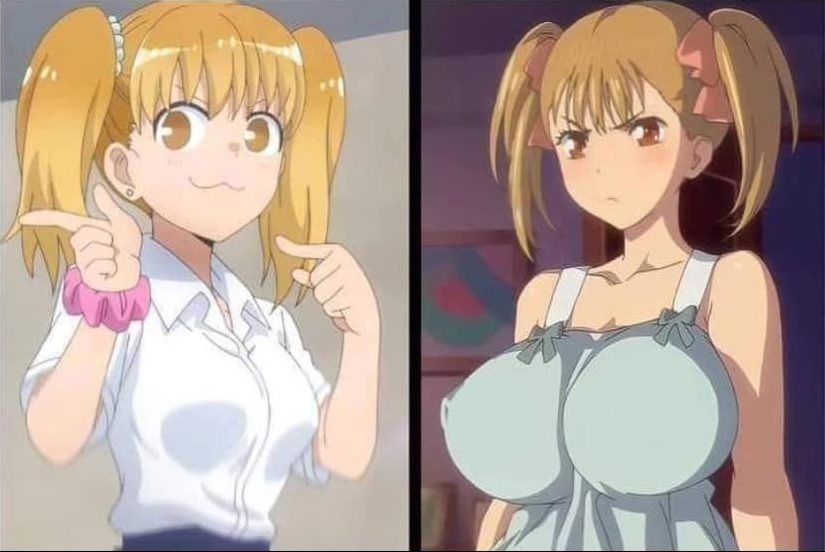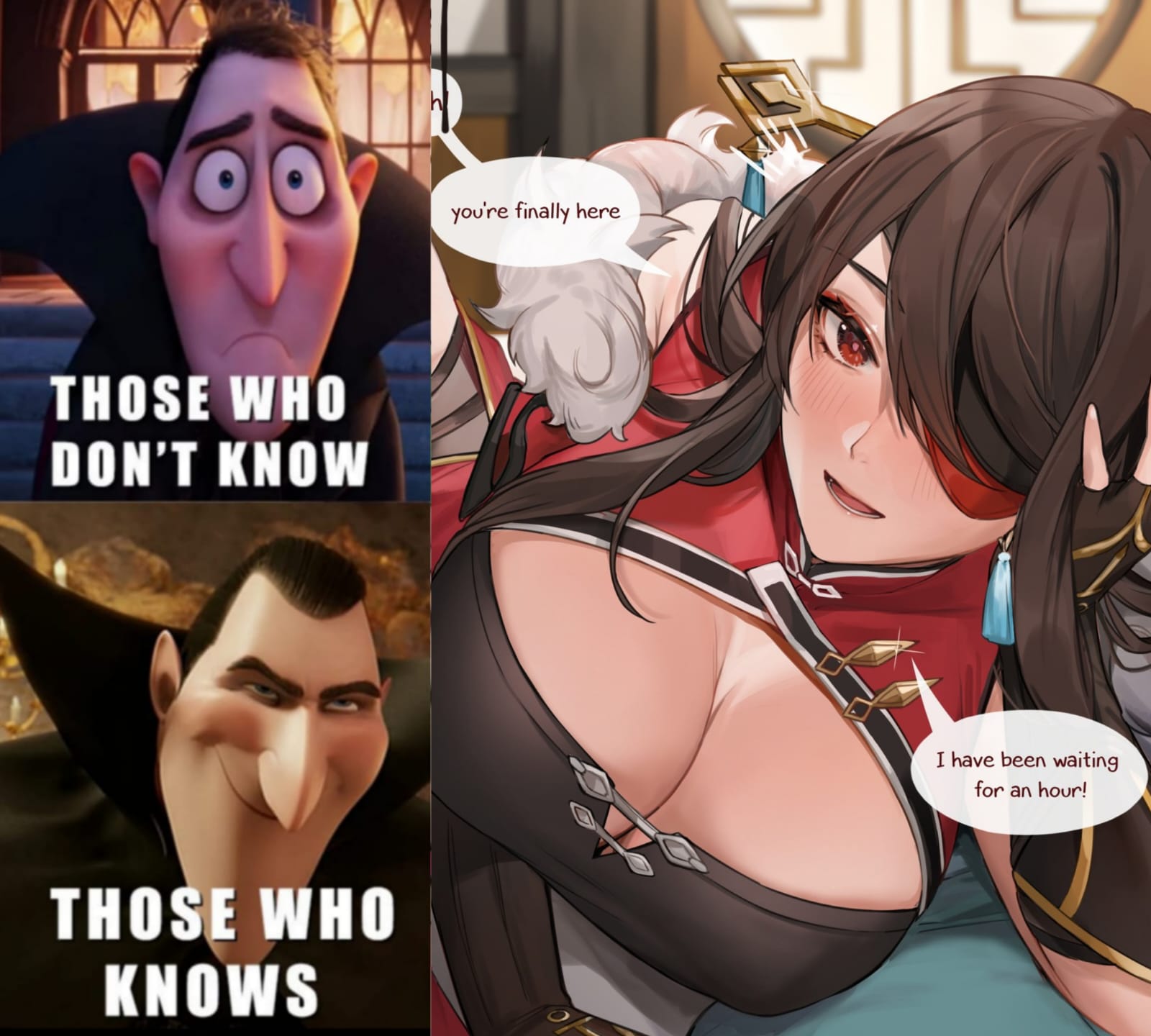The overlap between gamers and anime fans is growing ever more pronounced, almost forming a perfect circle. This evolution makes perfect sense, as both mediums emerged from niche beginnings and have now entered the mainstream, accessible to a global audience like never before. As a result, we see an abundance of games infused with anime aesthetics and numerous anime series that go into the gaming world.
From outstanding adaptations of video games to stories about the lives of gamers and game creators, or plots centered around playing a game, there is a wealth of anime content related to video games available for your viewing pleasure. Here are some of the best anime about video games that you can watch today.
7. Gamers
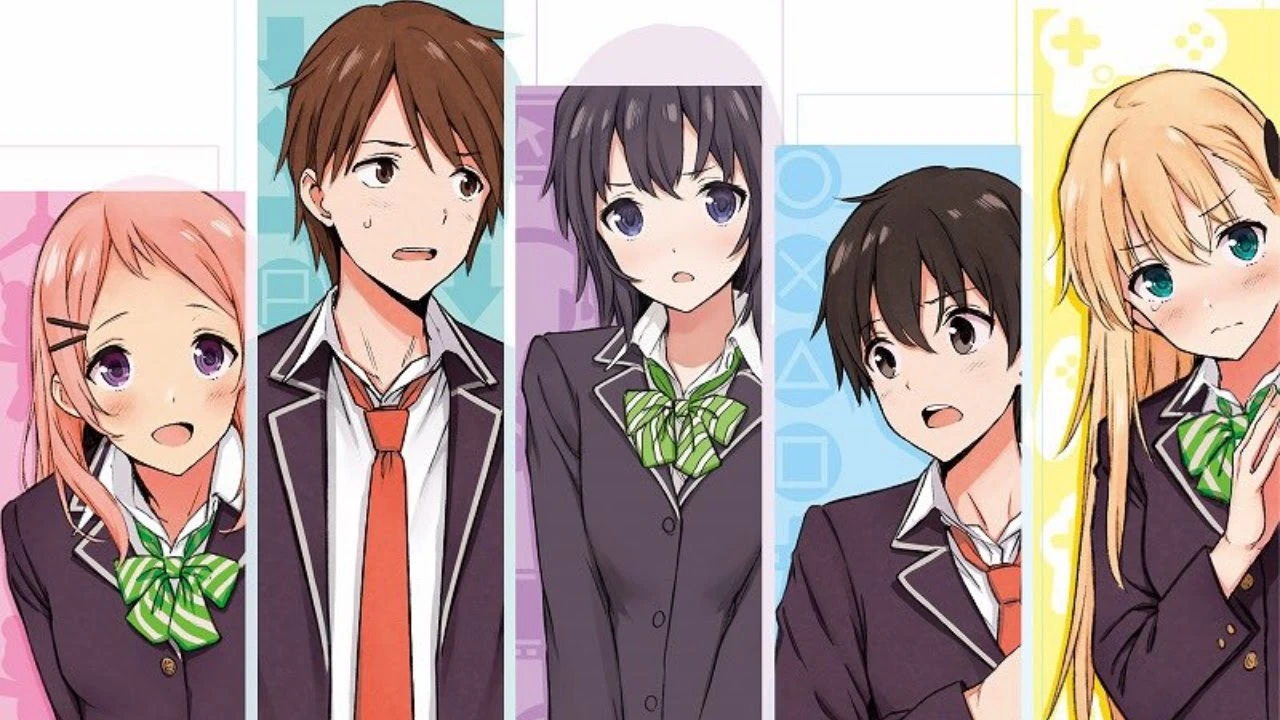
Certainly, when discussing the best game anime of all time, Gamers! should be part of the conversation. However, it’s worth noting that the series only tangentially qualifies despite its focus on gamers. While the characters are deeply involved in gaming across various genres, the narrative primarily unfolds as a romantic comedy laden with misunderstandings.
To clarify, Gamers! is a delightful rom-com with plenty of humorous moments, but its gaming element feels somewhat secondary. If the characters were passionate about manga or movies instead, the essence of the show would remain largely unchanged.
“D-Frag!” (ディーふらぐ!, Dīfuragu!) is a Japanese manga series written and illustrated by Tomoya Haruno. The series began serialization in Media Factory’s Monthly Comic Alive magazine in 2008 and has been adapted into an anime television series. “D-Frag!” is a comedic slice-of-life story centered around the antics of a high school game development club and the misadventures of its eccentric members.
The story follows Kenji Kazama, a delinquent high school student who prides himself on being a tough guy. However, his life takes an unexpected turn when he encounters the members of the school’s Game Creation Club. The club is infamous for its bizarre and outlandish activities, led by its equally eccentric members: Roka Shibasaki, Chitose Karasuyama, Sakura Mizukami, and Minami Ōsawa.
Kenji is initially dragged into the club against his will but soon finds himself entangled in their daily shenanigans. Each member of the club possesses a unique and quirky personality, leading to a series of comedic and chaotic situations. As Kenji becomes more involved with the club, he discovers that there’s more to these seemingly crazy individuals than meets the eye, and he gradually forms genuine friendships with them.
Kenji Kazama: The protagonist of the series, Kenji is a self-proclaimed delinquent who gets roped into joining the Game Creation Club. Despite his tough exterior, Kenji is often the voice of reason amidst the chaos of the club’s activities. His interactions with the club members provide much of the series’ humor and heart.
Roka Shibasaki: The diminutive but fiery president of the Game Creation Club, Roka has a mischievous and manipulative side. She is known for her “darkness bag” attack, a signature move that involves placing a paper bag over her opponent’s head. Despite her antics, Roka is a dedicated and passionate leader who genuinely cares for her friends.
Chitose Karasuyama: The vice president of the club and the student council president, Chitose is strong-willed and authoritative. She often uses her position to support the club’s activities and protect its members. Her assertive personality often clashes with Kenji’s, leading to humorous confrontations.
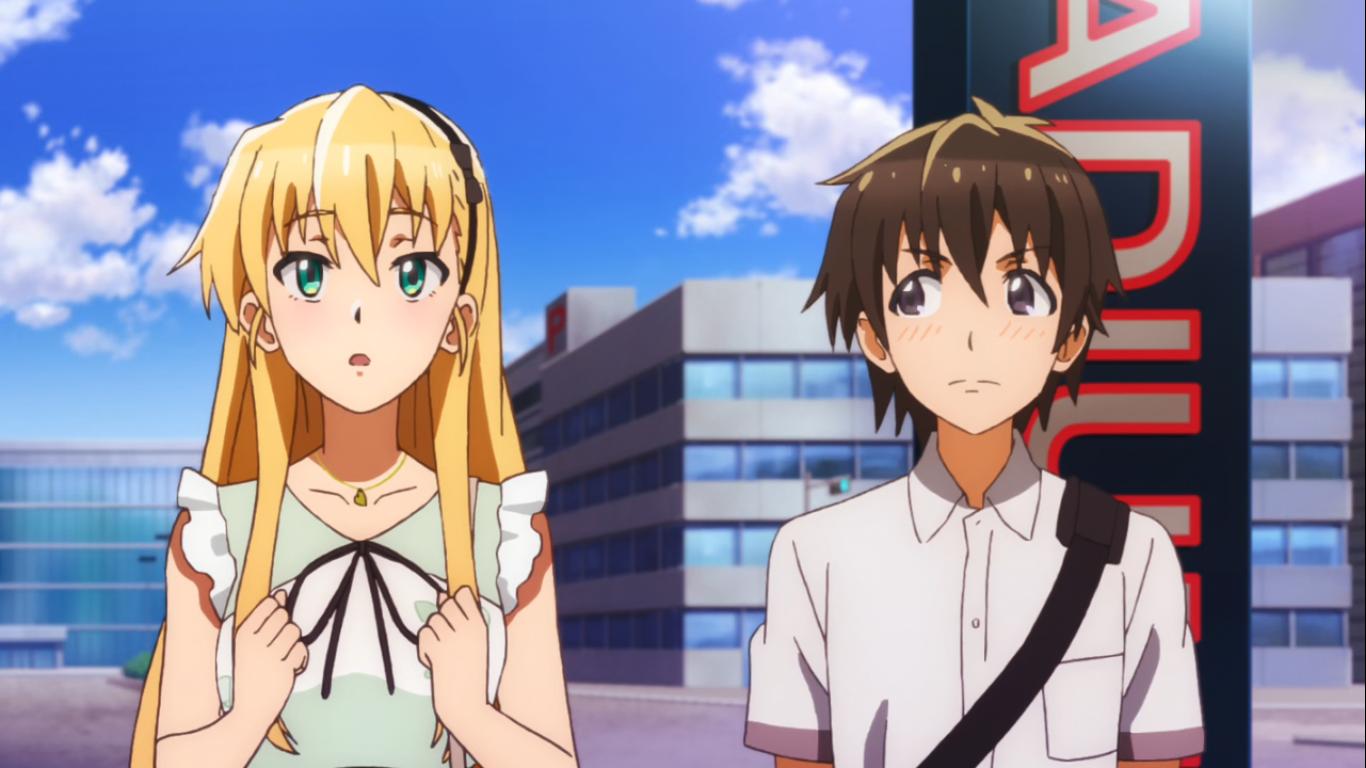
Sakura Mizukami: A soft-spoken and kind-hearted member of the club, Sakura is known for her unpredictable and somewhat eerie behavior. She has a fascination with all things supernatural and often introduces bizarre elements to the club’s games.
Minami Ōsawa: The club’s advisor and a former game developer, Minami is laid-back and carefree. She provides guidance and support to the club members, though she is often more interested in her own hobbies than in her responsibilities as an advisor.
D-Frag! thrives on its comedic elements, with each episode or chapter filled with slapstick humor, absurd situations, and witty dialogue. The series uses the exaggerated personalities of its characters to create laugh-out-loud moments and unpredictable scenarios. The dynamic interactions between the characters drive much of the humor, as they navigate the challenges of high school life and club activities.
At its core, “D-Frag!” is a story about friendship and finding one’s place. Kenji’s journey from an outsider to an integral part of the Game Creation Club highlights the importance of acceptance and camaraderie. The series explores how seemingly different individuals can come together to form meaningful bonds and support each other.
“D-Frag!” often parodies common tropes found in anime and manga, especially those related to high school settings and club activities. The series plays with expectations and subverts clichés, offering a fresh and humorous take on familiar themes. This self-awareness adds an extra layer of enjoyment for fans of the genre.
The art style of “D-Frag!” is vibrant and expressive, perfectly complementing the series’ comedic tone. The character designs are distinctive, with exaggerated facial expressions and dynamic poses that enhance the humor and energy of the scenes. The backgrounds and settings are detailed enough to provide context but remain unobtrusive, keeping the focus on the characters and their interactions.
The anime adaptation captures the essence of the manga with fluid animation, lively voice acting, and an upbeat soundtrack. The timing and delivery of jokes are well-executed, maintaining the fast-paced and chaotic nature of the series. The visual gags and comedic sequences are brought to life with creativity and flair, making the anime a faithful and entertaining adaptation of the source material.
“D-Frag!” has been well-received by fans and critics for its humor, character dynamics, and entertaining storyline. The series has gained a loyal following and is praised for its ability to balance comedy with moments of genuine heart and character development. The manga continues to be popular, with new chapters eagerly anticipated by readers.
The anime adaptation has also garnered positive reviews for its faithful portrayal of the manga’s humor and charm. It has introduced the series to a broader audience, further cementing “D-Frag!” as a beloved title in the comedy genre.
“D-Frag!” is a delightful and hilarious series that offers a refreshing take on the high school comedy genre. With its quirky characters, unpredictable scenarios, and heartfelt moments, it provides a thoroughly enjoyable experience for fans of light-hearted, character-driven stories. Whether you’re reading the manga or watching the anime, “D-Frag!” is sure to entertain and amuse with its unique blend of humor and heart.
6. D-Frag

D-Frag! essentially falls into the slice-of-life genre, but it revolves around people indulging in games. While it could easily have settled into a generic mold given its premise, it manages to avoid that fate entirely.
Instead, the series boasts a distinctive style and rich characterization that fascinates viewers. The characters engage in a variety of games, keeping the narrative fresh, and there’s a sporadic infusion of genuine eccentricity that keeps viewers on their toes, eagerly anticipating where the series will venture next.
“D-Frag!” (ディーふらぐ!, Dīfuragu!) is a Japanese manga series written and illustrated by Tomoya Haruno. The series began serialization in Media Factory’s Monthly Comic Alive magazine in 2008 and has been adapted into an anime television series. “D-Frag!” is a comedic slice-of-life story centered around the antics of a high school game development club and the misadventures of its eccentric members.
The story follows Kenji Kazama, a delinquent high school student who prides himself on being a tough guy. However, his life takes an unexpected turn when he encounters the members of the school’s Game Creation Club. The club is infamous for its bizarre and outlandish activities, led by its equally eccentric members: Roka Shibasaki, Chitose Karasuyama, Sakura Mizukami, and Minami Ōsawa.
Kenji is initially dragged into the club against his will but soon finds himself entangled in their daily shenanigans. Each member of the club possesses a unique and quirky personality, leading to a series of comedic and chaotic situations. As Kenji becomes more involved with the club, he discovers that there’s more to these seemingly crazy individuals than meets the eye, and he gradually forms genuine friendships with them.
Kenji Kazama: The protagonist of the series, Kenji is a self-proclaimed delinquent who gets roped into joining the Game Creation Club. Despite his tough exterior, Kenji is often the voice of reason amidst the chaos of the club’s activities. His interactions with the club members provide much of the series’ humor and heart.
Roka Shibasaki: The diminutive but fiery president of the Game Creation Club, Roka has a mischievous and manipulative side. She is known for her “darkness bag” attack, a signature move that involves placing a paper bag over her opponent’s head. Despite her antics, Roka is a dedicated and passionate leader who genuinely cares for her friends.
Chitose Karasuyama: The vice president of the club and the student council president, Chitose is strong-willed and authoritative. She often uses her position to support the club’s activities and protect its members. Her assertive personality often clashes with Kenji’s, leading to humorous confrontations.
Sakura Mizukami: A soft-spoken and kind-hearted member of the club, Sakura is known for her unpredictable and somewhat eerie behavior. She has a fascination with all things supernatural and often introduces bizarre elements to the club’s games.
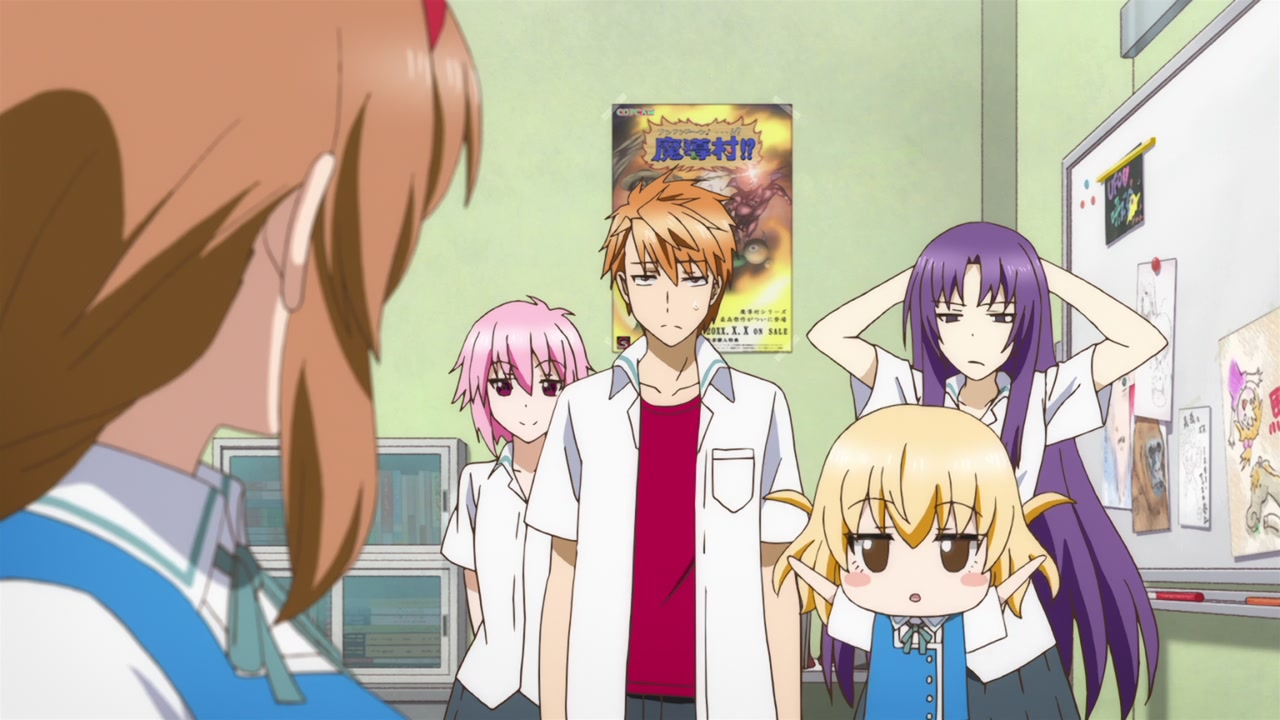
Minami Ōsawa: The club’s advisor and a former game developer, Minami is laid-back and carefree. She provides guidance and support to the club members, though she is often more interested in her own hobbies than in her responsibilities as an advisor.
D-Frag! thrives on its comedic elements, with each episode or chapter filled with slapstick humor, absurd situations, and witty dialogue. The series uses the exaggerated personalities of its characters to create laugh-out-loud moments and unpredictable scenarios. The dynamic interactions between the characters drive much of the humor, as they navigate the challenges of high school life and club activities.
At its core, “D-Frag!” is a story about friendship and finding one’s place. Kenji’s journey from an outsider to an integral part of the Game Creation Club highlights the importance of acceptance and camaraderie. The series explores how seemingly different individuals can come together to form meaningful bonds and support each other.
D-Frag! often parodies common tropes found in anime and manga, especially those related to high school settings and club activities. The series plays with expectations and subverts clichés, offering a fresh and humorous take on familiar themes. This self-awareness adds an extra layer of enjoyment for fans of the genre.
The art style of “D-Frag!” is vibrant and expressive, perfectly complementing the series’ comedic tone. The character designs are distinctive, with exaggerated facial expressions and dynamic poses that enhance the humor and energy of the scenes. The backgrounds and settings are detailed enough to provide context but remain unobtrusive, keeping the focus on the characters and their interactions.
The anime adaptation captures the essence of the manga with fluid animation, lively voice acting, and an upbeat soundtrack. The timing and delivery of jokes are well-executed, maintaining the fast-paced and chaotic nature of the series. The visual gags and comedic sequences are brought to life with creativity and flair, making the anime a faithful and entertaining adaptation of the source material.
“D-Frag!” has been well-received by fans and critics for its humor, character dynamics, and entertaining storyline. The series has gained a loyal following and is praised for its ability to balance comedy with moments of genuine heart and character development. The manga continues to be popular, with new chapters eagerly anticipated by readers.
The anime adaptation has also garnered positive reviews for its faithful portrayal of the manga’s humor and charm. It has introduced the series to a broader audience, further cementing “D-Frag!” as a beloved title in the comedy genre.
“D-Frag!” is a delightful and hilarious series that offers a refreshing take on the high school comedy genre. With its quirky characters, unpredictable scenarios, and heartfelt moments, it provides a thoroughly enjoyable experience for fans of light-hearted, character-driven stories. Whether you’re reading the manga or watching the anime, “D-Frag!” is sure to entertain and amuse you with its unique blend of humor and heart.
5. Sword Art Online
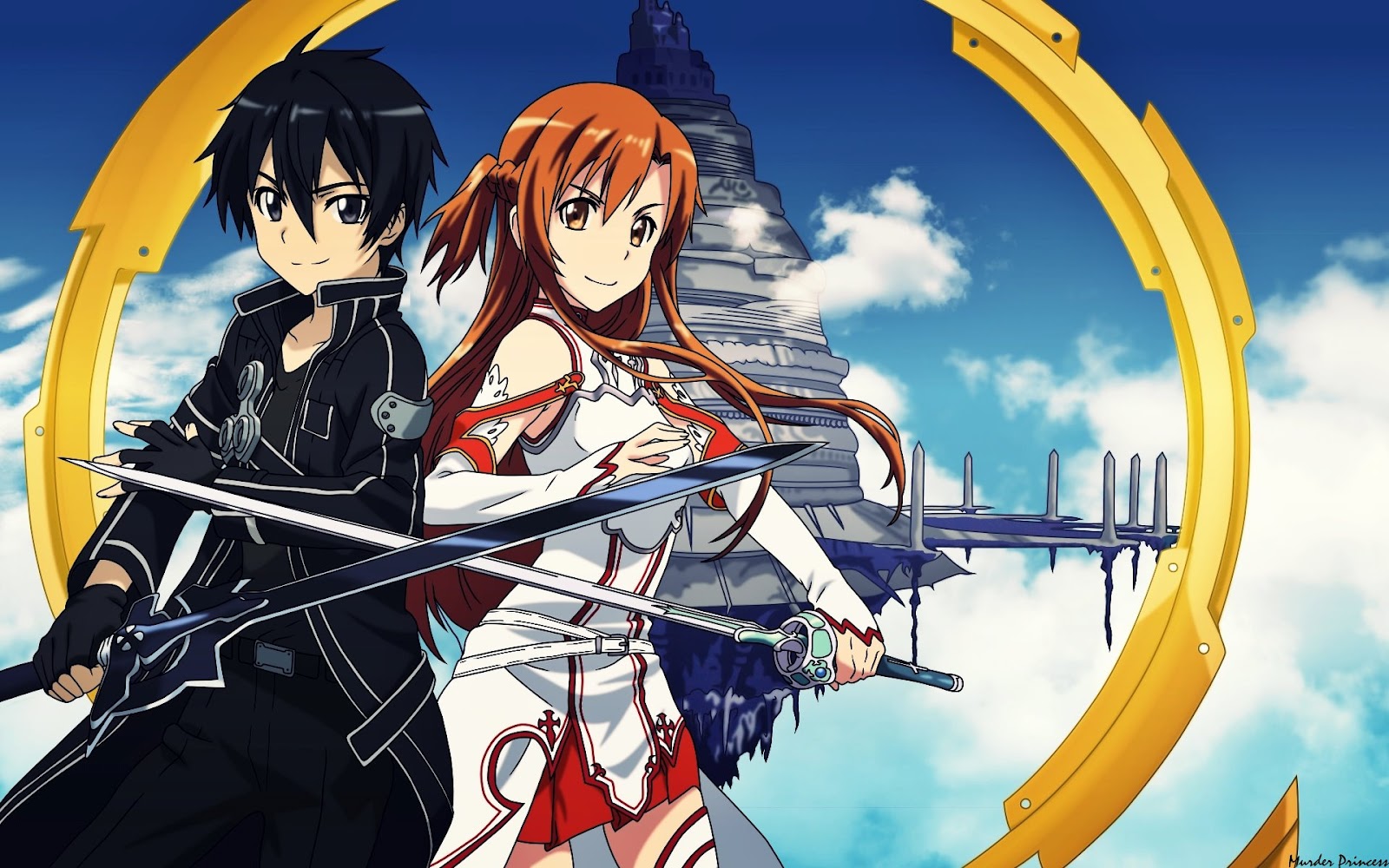
In Sword Art Online, the premise unfolds as 10,000 players immerse themselves in a virtual reality MMO, only to discover they’re trapped inside with no means of logging out. To make matters worse, if their in-game avatars perish, so do their real bodies.
Kirito, a seasoned player from the beta phase, takes it upon himself to prevent any further casualties, going on a quest to conquer the daunting 100-floor Aincrad castle and liberate everyone from the game’s confines.
Sword Art Online offers a thrilling blend of action, rich characterization, and intricate lore surrounding the game’s creators and its enigmatic founder. It’s no wonder the series has left an indelible mark on the genre, solidifying its status as a must-watch for anime enthusiasts.
Sword Art Online (SAO) is a Japanese light novel series written by Reki Kawahara and illustrated by Abec. The series began publication in 2009 and has since expanded into a multimedia franchise, including anime adaptations, manga, video games, and even a live-action adaptation. The story is renowned for its exploration of virtual reality, online gaming, and the psychological and philosophical implications of living in a digital world.
Sword Art Online is set in the near future, where virtual reality massively multiplayer online role-playing games (VRMMORPGs) have become a popular pastime. The series begins with the release of a groundbreaking game called Sword Art Online (SAO), which utilizes a FullDive system, allowing players to fully immerse themselves in a virtual world using a device called the NerveGear.
The story starts with Kazuto Kirigaya, known by his in-game alias Kirito, who is among the ten thousand players to log into SAO on its launch day. However, the players quickly realize that they cannot log out.
The game’s creator, Akihiko Kayaba, appears and informs them that they must clear all 100 floors of the game’s massive floating castle, Aincrad, to escape. If they die in the game or someone tries to remove their NerveGear in the real world, they will die in real life.
Kirito, a beta tester for SAO, decides to go solo to increase his chances of survival. Throughout his journey, he encounters and befriends various characters, including Asuna Yuuki, a skilled player who becomes his close companion and love interest. The Aincrad arc focuses on their struggle to survive, build relationships, and ultimately defeat Kayaba to free all the players.
After the events of Aincrad, Kirito is called upon to investigate a new VRMMORPG called Alfheim Online (ALO), where he discovers that Asuna is trapped within the game. The plot revolves around Kirito’s efforts to rescue Asuna, who is held captive by Nobuyuki Sugou, the game’s administrator, who aims to manipulate her real-life memories and emotions.
In this arc, Kirito is asked to investigate mysterious deaths linked to the VRMMORPG Gun Gale Online (GGO). Players in GGO are reportedly dying in the real world after being shot by a player known as Death Gun. Kirito, adopting a female avatar, dives into the game to uncover the truth and prevent further deaths. He teams up with Shino Asada (Sinon), a skilled sniper with her own traumatic past.
The series continues with other arcs, such as “Mother’s Rosario,” which focuses on Asuna’s perspective and her friendship with a terminally ill player named Yuuki Konno. The “Alicization” arc is one of the longest and most complex, involving Kirito’s adventures in the Underworld, a highly advanced virtual world created by a company called Rath for military purposes.
SAO goes deeply into the concept of virtual reality and its potential impact on society. It explores both the escapism provided by virtual worlds and the dangers of becoming too immersed in them. The series often raises questions about identity, reality, and the ethical implications of advanced technology.
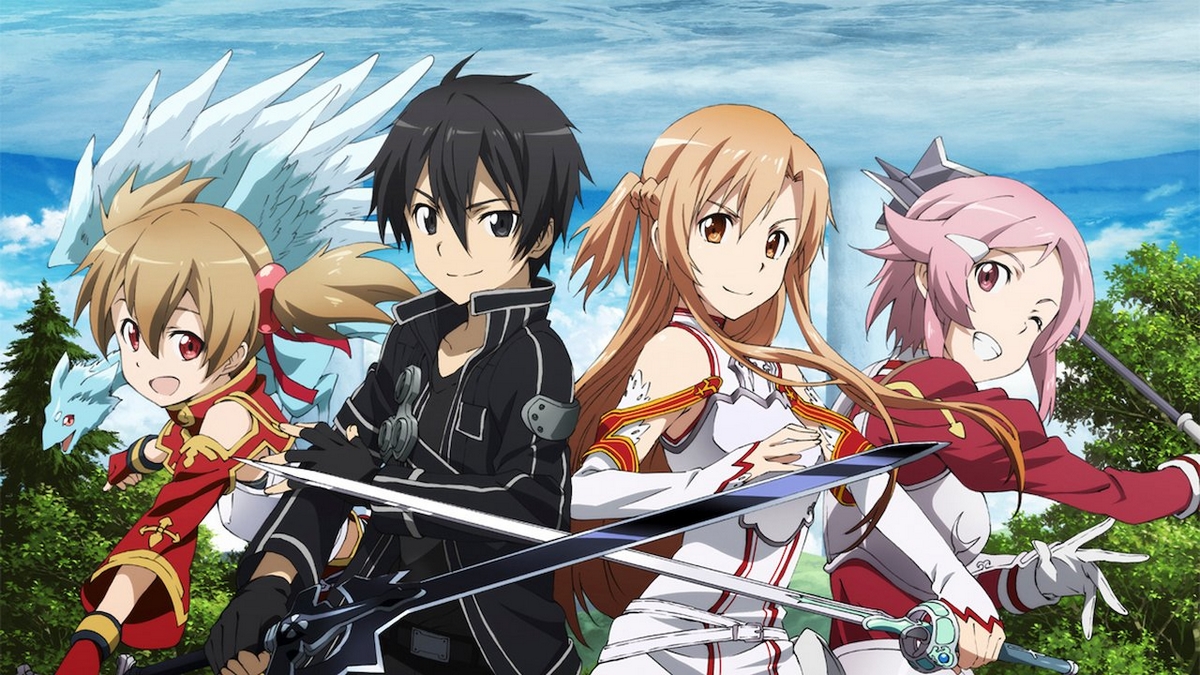
The Aincrad arc, in particular, emphasizes themes of survival and resilience. The characters must adapt to a harsh and dangerous environment, form alliances, and develop skills to progress through the game. The psychological toll of being trapped in a life-or-death game is a recurring theme.
At its heart, SAO is also a story about human relationships. Kirito’s interactions with other players, especially Asuna, are central to the narrative. The series explores how people connect, form friendships, and find love even in the most trying circumstances.
Kirito embodies the classic hero archetype, often putting himself at risk to save others. His journey is marked by acts of bravery and sacrifice, highlighting the importance of selflessness and courage.
Kazuto “Kirito” Kirigaya: The main protagonist, Kirito is a skilled gamer with a strong sense of justice. His experiences in SAO shaped his development, making him more empathetic and determined. He is known for his dual-wielding ability and exceptional combat skills.
Asuna Yuuki: Asuna starts as a powerful and independent player in SAO, eventually becoming Kirito’s partner and love interest. Her character evolves from being focused solely on survival to finding meaning and relationships in the virtual world. She is a capable warrior and a compassionate leader.
Suguha “Leafa” Kirigaya: Kirito’s cousin and adopted sister, Suguha plays a significant role in the Alfheim Online arc. She grapples with her feelings for Kirito and her own identity within the game world.
Shino “Sinon” Asada: Introduced in the GGO arc, Sinon is a skilled sniper dealing with the trauma of a past incident. Her relationship with Kirito helps her confront her fears and grow as a character.
Yui: An AI program in SAO who becomes like a daughter to Kirito and Asuna. Her presence adds emotional depth to their relationship and underscores the potential for artificial intelligence to form meaningful connections with humans.
The artwork in both the light novels and anime is highly detailed and visually appealing. Abec’s illustrations bring the characters and the expansive virtual worlds to life, capturing the essence of the series’ various settings, from the medieval-inspired Aincrad to the futuristic GGO.
The anime adaptation, produced by A-1 Pictures, is known for its high-quality animation, particularly in its action scenes. The music, composed by Yuki Kajiura, enhances the emotional and dramatic moments, making the series an audiovisual treat.
“Sword Art Online” has been both highly popular and polarizing. It has garnered a massive fanbase worldwide, praised for its innovative premise, engaging characters, and exploration of virtual reality. The series’ impact on the isekai genre (where characters are transported to another world) is significant, influencing many subsequent works.
Critics, however, have pointed out flaws such as pacing issues, character development inconsistencies, and certain problematic elements in the narrative. Despite this, SAO remains a significant and influential series in modern anime and light novel culture.
“Sword Art Online” is a landmark series that offers a compelling blend of action, romance, and science fiction. Its exploration of virtual reality and gaming, combined with its focus on human relationships and ethical dilemmas, makes it a thought-provoking and entertaining work. While it has its flaws, the series’ strengths and its impact on the genre make it a must-watch for fans of anime and light novels.
4. Saekano: How to Raise a Boring Girlfriend

Saekano: How to Raise a Boring Girlfriend garners respect not only as a harem anime but also as one of the best game-themed series, with its male protagonist striving to create a visual novel. This endeavor naturally entails assembling a cast of female characters, each embodying distinct archetypes, all of whom play integral roles in the game’s development process.
While Saekano indulges in its fair share of ecchi moments and humor, it epitomizes the harem genre in many respects, placing the characters’ relationships at the forefront across both seasons and the movie.
However, what sets it apart is how the characters’ growth is intricately interwoven with the progression of the game’s development. Rather than merely serving as a catalyst to unite the characters, the pursuit of creating the visual novel remains a consistent focal point throughout the narrative.
“Saekano: How to Raise a Boring Girlfriend” (冴えない彼女の育てかた, Saenai Hiroin no Sodatekata), often abbreviated as “Saekano,” is a Japanese light novel series written by Fumiaki Maruto and illustrated by Kurehito Misaki.
The series has been adapted into multiple media formats, including manga and an anime television series. Known for its unique take on the harem and romantic comedy genres, “Saekano” blends humor, romance, and meta-commentary on the otaku culture and the process of game development.
The story revolves around Tomoya Aki, a high school student and an otaku with a passion for visual novels and anime. Inspired by his experiences and the characters he loves, Tomoya decides to create his own dating sim game. To achieve this goal, he recruits a group of talented yet eccentric classmates to form a doujin (independent) game development circle named Blessing Software.
Tomoya Aki: The protagonist and self-proclaimed otaku. His encounter with a beautiful yet plain girl on a hilltop inspires him to create the perfect heroine for his game. He later discovers that the girl is his unremarkable classmate, Megumi Kato.
Megumi Kato: The titular “boring girlfriend,” Megumi is an ordinary girl who becomes the model for Tomoya’s game’s heroine. Despite her initial lack of presence, she gradually reveals her own unique charm and becomes an integral part of the group.
Eriri Spencer Sawamura: A talented artist and Tomoya’s childhood friend. She has a secret identity as a popular doujinshi artist and agrees to be the illustrator for Tomoya’s game.
Utaha Kasumigaoka: A successful light novel author and one of Tomoya’s favorite writers. She takes on the role of the scenario writer for the game, bringing her sharp wit and literary skills to the project.
The series focuses on the challenges the team faces while developing their game, from creative differences to personal conflicts. Each character’s backstory and their relationship with Tomoya are explored, adding depth to their interactions.
As the team works together, romantic tensions arise. Both Eriri and Utaha have feelings for Tomoya, leading to a complex web of emotions and rivalry. Megumi, initially indifferent, gradually develops her own feelings for Tomoya as well.
The team’s efforts culminate in the completion of their game, which receives a positive reception at a doujin convention. However, the success brings new challenges, including the possibility of professional opportunities and the strains they place on personal relationships.

“Saekano” offers a otaku culture, particularly the world of visual novels and doujinshi creation. It provides an insider’s look at the creative process, highlighting both the joys and struggles of producing a game. The series often breaks the fourth wall, using meta-humor to comment on common tropes and clichés in the harem and romance genres.
One of the strengths of “Saekano” is its character development. Each member of Blessing Software has a well-defined personality and backstory, making them more than just typical harem archetypes. The series goes into their motivations, insecurities, and growth, creating a interpersonal dynamics. The evolution of Megumi from a “boring” girl to a fully realized character is particularly noteworthy.
While “Saekano” is filled with comedic moments, it doesn’t shy away from exploring the complexities of romantic relationships. The love triangle (or square) between Tomoya, Eriri, Utaha, and Megumi is handled with sensitivity and depth, allowing for genuine emotional moments amidst the humor.
The visual design of “Saekano,” both in the light novels and the anime, is striking and vibrant. Kurehito Misaki’s illustrations are detailed and expressive, capturing the characters’ personalities and the nuances of their interactions. The anime adaptation, produced by A-1 Pictures, faithfully translates this aesthetic to the screen with high-quality animation, especially in key dramatic and comedic scenes.
The anime’s soundtrack, composed by Hajime Hyakkoku, complements the series’ tone with a mix of upbeat and emotional tracks. The opening and ending themes are catchy and memorable, enhancing the overall viewing experience.
“Saekano” has been well-received by both fans and critics for its witty writing, engaging characters, and insightful commentary on the otaku subculture. The series’ ability to balance humor, romance, and drama has earned it a dedicated fanbase. The anime adaptation, in particular, has been praised for its faithful representation of the source material and its high production values.
The series has also sparked discussions about the portrayal of female characters in otaku media, with Megumi’s transformation from a “boring” character to a beloved heroine being a focal point. “Saekano” challenges and subverts many of the tropes associated with the harem genre, making it a standout work in its field.
“Saekano: How to Raise a Boring Girlfriend” is a compelling and entertaining series that offers a fresh take on the romantic comedy and harem genres. Through its well-developed characters, insightful commentary on otaku culture, and engaging storyline, it provides a rich and satisfying experience for readers and viewers alike.
Whether you are a fan of light novels, anime, or simply enjoy stories about the creative process and complex relationships, “Saekano” is a series worth exploring.
3. Log Horizon
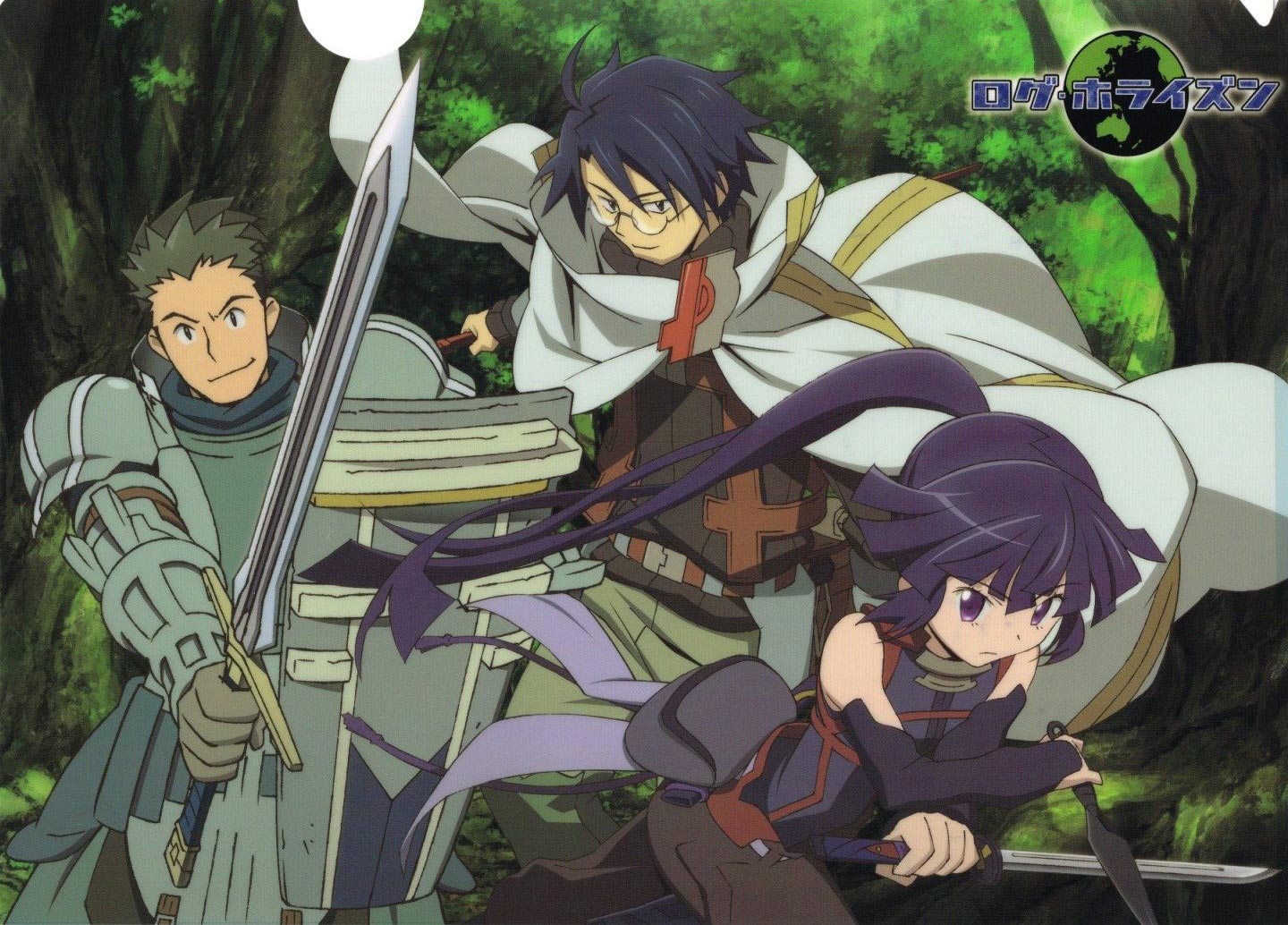
The game anime genre is indeed saturated with series centered on the concept of people trapped inside virtual worlds, making it a challenge to distinguish the gems from mediocrity.
Among the standouts is Log Horizon, and its distinction lies in a simple yet significant factor: many anime exploring this premise tend to overlook the fundamental rules of the games they depict. Concepts like team composition, aggro management, and metagaming often take a backseat to flashy action and dramatic plotlines.
However, Log Horizon bucks this trend by keeping the elements of the game itself firmly in focus. This ensures that the setting maintains its depth and complexity, never devolving into a generic fantasy backdrop.
“Log Horizon” is a Japanese light novel series written by Mamare Touno and illustrated by Kazuhiro Hara. The series began publication in 2010 and has since been adapted into manga and anime formats. “Log Horizon” stands out in the isekai genre (where characters are transported to another world) for its detailed exploration of a virtual world, strategic gameplay, and the socio-political ramifications of living in a game-like environment.
The story of “Log Horizon” begins with a typical premise for its genre: thousands of players of the massively multiplayer online role-playing game (MMORPG) “Elder Tale” suddenly find themselves transported into the game world, unable to log out. Unlike many isekai series that focus on action and adventure, “Log Horizon” goes deeply into the logistics of living in a virtual world and the complexities of building a new society.
The event that traps the players in the game world is referred to as the “Apocalypse.” The protagonist, Shiroe, is a veteran player and strategist known for his tactical genius and cautious nature. As players come to grips with their new reality, Shiroe decides to form a guild called Log Horizon to provide structure and support.
Shiroe’s initial companions include Naotsugu, a guardian and former comrade, and Akatsuki, an assassin who respects Shiroe and treats him as her master.
Recognizing the need for order and cooperation, Shiroe proposes the formation of a governing body called the Round Table Conference in the city of Akiba. This council brings together the leaders of major guilds to manage the city’s resources, protect its inhabitants, and ensure fair treatment of all players.
This arc explores the political and social challenges of creating a stable community in a lawless world. Shiroe’s diplomatic skills and strategic thinking are crucial in navigating these complexities.
With the establishment of the Round Table, Shiroe and his allies begin to explore the wider world of Elder Tale, uncovering new areas and encountering both friendly and hostile non-player characters (NPCs), known as “People of the Land.”
The series goes into the relationship between the adventurers (players) and the People of the Land, exploring themes of coexistence, culture clash, and mutual dependence.
As the adventurers become more organized, they take on larger threats such as raid bosses and external forces that threaten their newfound society. These arcs often focus on the tactical aspects of battle, showcasing Shiroe’s strategic brilliance.
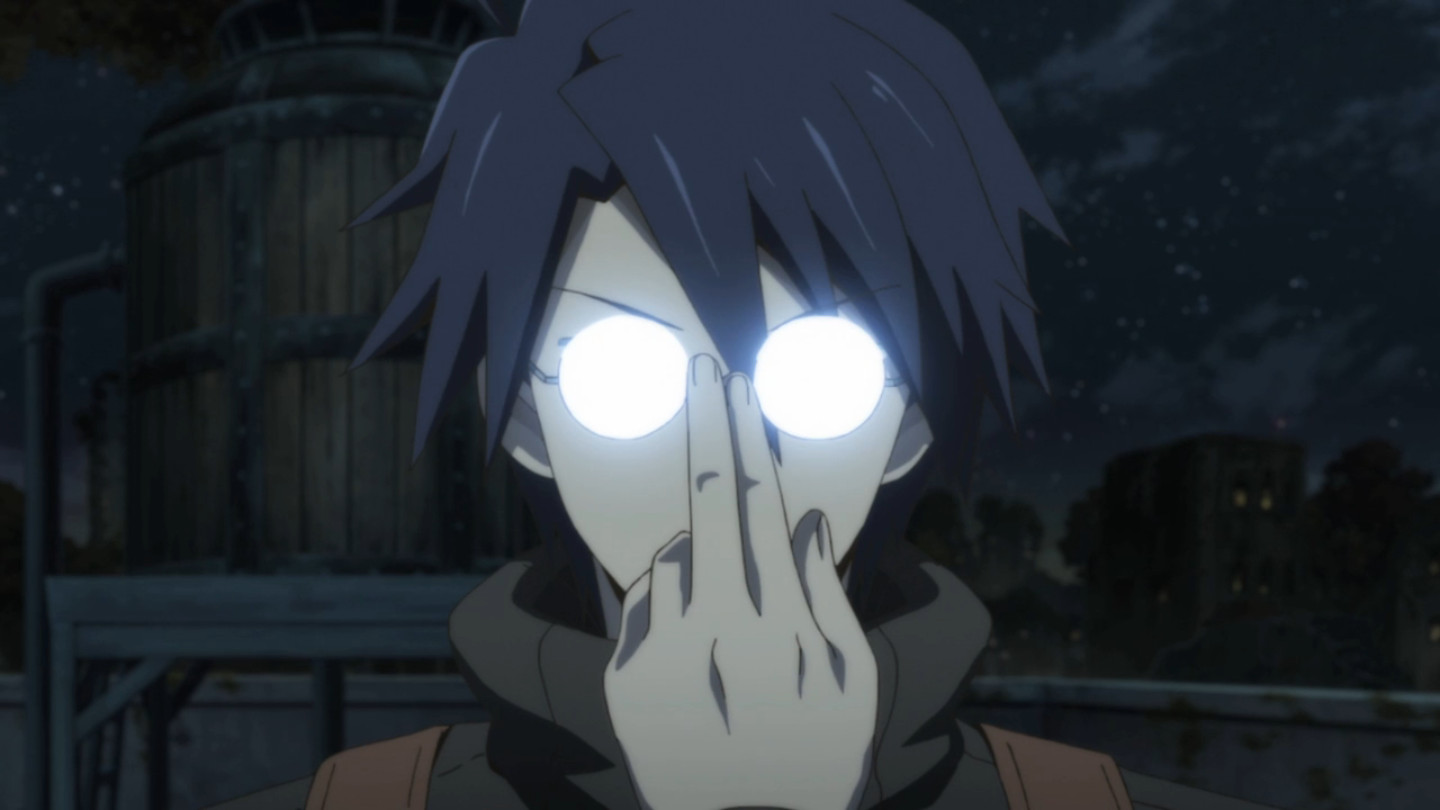
Shiroe’s use of complex strategies and team coordination in raid battles highlights the importance of intelligence and planning over sheer strength.
“Log Horizon” distinguishes itself by focusing on the socio-political dynamics of living in a virtual world. The creation of the Round Table and the interactions between guilds offer a microcosm of governance and diplomacy. The series explores how people adapt to new societal structures and the importance of cooperation and compromise.
The series places a heavy emphasis on strategy and tactics, both in combat and in the management of resources and people. Shiroe’s character, a master strategist, often uses his intellect to solve problems, making “Log Horizon” more of a cerebral experience compared to other action-driven isekai series.
“Log Horizon” features a diverse cast of characters, each with their own growth and development. Shiroe evolves from a solitary player to a respected leader, while other characters like Akatsuki and Naotsugu undergo their own journeys of self-discovery and personal growth.
The series explores the implications of living in a virtual world, including the psychological impact on the players, the ethics of interacting with NPCs, and the blending of virtual and real-world identities. The concept of “death” in the game world, where players revive but face potential memory loss, adds a unique twist to the typical stakes of life and death.
The illustrations by Kazuhiro Hara and the animation by studios Satelight (Season 1) and Studio Deen (Seasons 2 and 3) capture the rich detail of the “Elder Tale” world. The character designs are distinct and expressive, helping to convey the personalities and emotions of the characters effectively.
The anime’s soundtrack, composed by Yasuharu Takanashi, complements the series’ tone with a mix of epic orchestral pieces and atmospheric tracks that enhance the immersive experience of the game world. The opening theme “Database” by Man with a Mission ft. Takuma is particularly notable for its catchy and energetic vibe, fitting the series’ adventurous spirit.
“Log Horizon” has been well-received for its intelligent writing, complex characters, and detailed world-building. Fans appreciate its unique approach to the isekai genre, focusing on strategy and societal development rather than just action and adventure. The series has sparked discussions about the potential of virtual reality and online communities, resonating with both gamers and anime enthusiasts.
Critics have praised “Log Horizon” for its thought-provoking themes and intricate plot, though some have noted that its slower, more methodical pacing may not appeal to viewers looking for constant action. Nonetheless, the series’ depth and originality have secured its place as a standout in the genre.
“Log Horizon” is a compelling and innovative series that offers a fresh perspective on the isekai genre. Its focus on strategic gameplay, socio-political dynamics, and character development sets it apart from more action-oriented counterparts.
Whether you’re interested in the complexities of virtual reality, the challenges of building a new society, or the intricacies of strategy and tactics, “Log Horizon” provides a rich and engaging experience that is both entertaining and intellectually stimulating.
2. The King’s Avatar
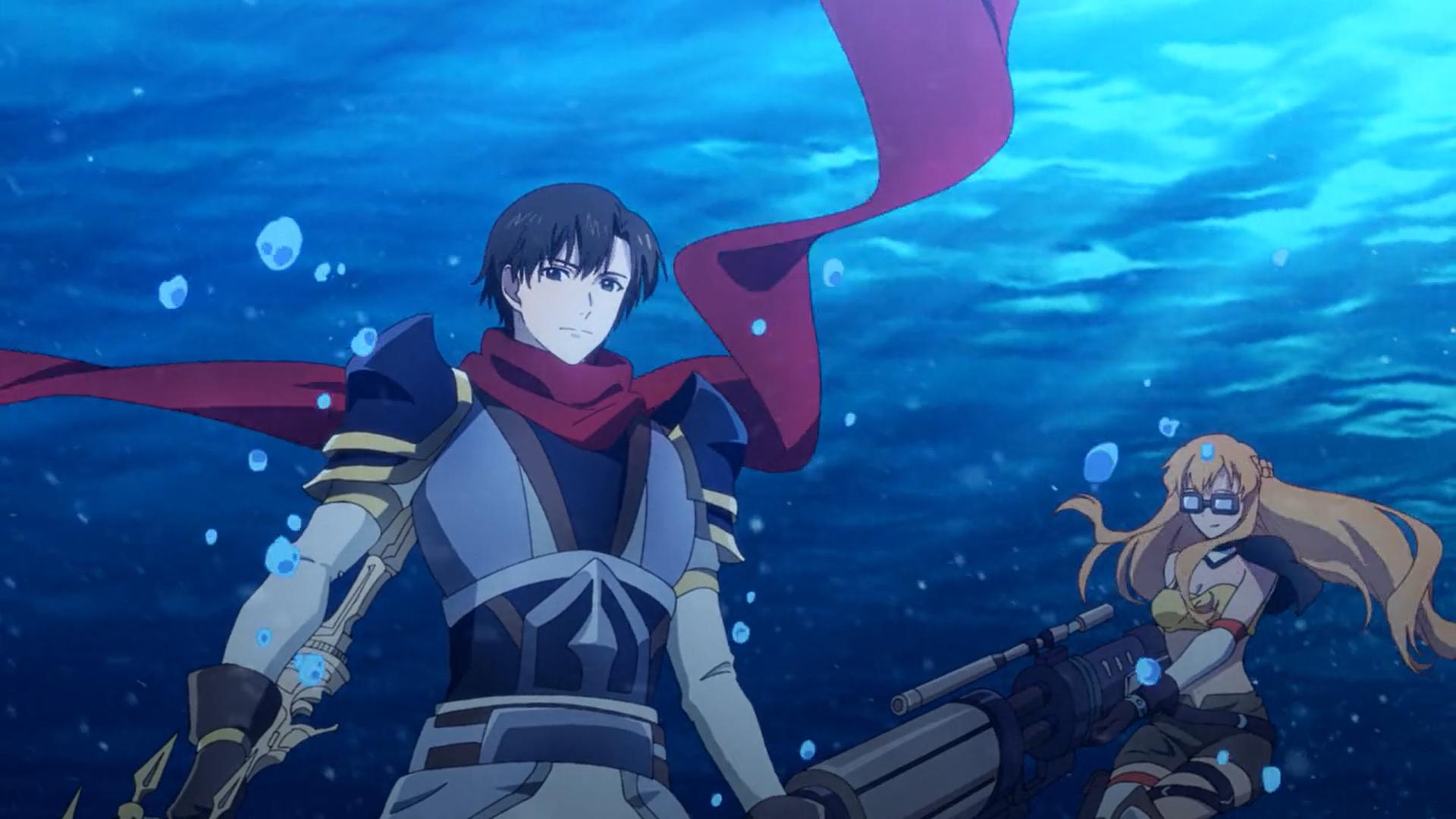
In The King’s Avatar, the spotlight shifts to the esports arena as it follows Ye Xiu, a top-tier player who finds himself ousted from his professional team, leading him to take on the role of a night manager at an internet cafe. However, when a new server is launched, Ye seizes the opportunity to return to his beloved game, going on the arduous journey of rebuilding his reputation from scratch.
Despite his exceptional skills and vast knowledge of the game, Ye faces the daunting task of reacquainting himself with a game that has evolved during his absence. While his prowess catches the eye of various guilds, he grapples with the challenge of adapting to the changes in gaming.
The King’s Avatar stands out as one of the few game anime that truly grasps the intricacies of MMO gameplay. Moreover, its stunning animation only adds to its allure. By looking into the professional esports scene, the series offers a candid portrayal of the harsh realities of competitive gaming, where the line between leisure and work often blurs.
“The King’s Avatar” (全职高手, Quan Zhi Gao Shou) is a Chinese web novel written by Hu Dielan (Butterfly Blue). The novel was first serialized in 2011 on the Qidian Chinese website and has since been adapted into a highly successful multimedia franchise, including manhua (Chinese comics);
Adonghua (Chinese animated series), and a live-action television series. “The King’s Avatar” is renowned for its detailed portrayal of the e-sports world, rich character development, and engaging narrative.
“The King’s Avatar” is set in the competitive world of professional e-sports, focusing on a fictional online multiplayer game called Glory. The story follows Ye Xiu, a legendary player known for his exceptional skills and strategic prowess.
Ye Xiu, also known by his in-game name Ye Qiu, is a top-tier professional player and captain of the team Excellent Era. However, due to various conflicts with the team’s management, he is forced to retire and give up his account, One Autumn Leaf.
Ye Xiu takes a job at an internet café and begins anew in the game of Glory under a new alias, Lord Grim, starting from scratch with a newly created character. This arc introduces his struggle to regain his status in the highly competitive environment.
Ye Xiu’s journey of rebuilding starts with him playing on public servers, quickly gaining attention due to his extraordinary skill despite using a character without a specific class (Unspecialized). He attracts a following and begins to assemble a new team.
Key characters such as Su Mucheng, his long-time friend and a star player, and Tang Rou, a determined newcomer, join him. Together, they form the basis of a new team aiming for professional status.
Challenges and Competitions:
As Ye Xiu’s team, Happy, progresses through various challenges, they compete in both online and offline tournaments.
They face numerous obstacles, including powerful established teams and internal conflicts.
This arc goes into the strategies, teamwork, and dedication required to succeed in the competitive e-sports world. It also highlights the personal growth of team members and their evolving dynamics.
Road to the Championship:
The ultimate goal for Ye Xiu and Team Happy is to win the Glory Professional Alliance championship. This arc focuses on their relentless pursuit of this goal, showcasing intense matches, strategic battles, and the emotional highs and lows of competition.

Alongside the main plot, the story explores themes of friendship, perseverance, and the spirit of e-sports, culminating in a gripping finale that emphasizes the importance of passion and hard work.
“The King’s Avatar” offers a deep information of the e-sports industry, providing an authentic and detailed depiction of professional gaming. The story captures the excitement, pressure, and complexities of the e-sports scene, resonating with both gamers and non-gamers alike.
Central to the narrative is Ye Xiu’s journey of redemption. His fall from grace and subsequent rise highlight themes of resilience, determination, and the pursuit of excellence. The story emphasizes that true passion and dedication can overcome even the most daunting obstacles.
The importance of teamwork and the bonds between players is a recurring theme. The interactions and relationships within Team Happy, as well as with their rivals, showcase the camaraderie and mutual respect that define the e-sports community.
The characters in “The King’s Avatar” are richly developed, with distinct personalities, backgrounds, and growth arcs. Ye Xiu’s leadership and mentorship play a crucial role in shaping the members of Team Happy, each of whom brings their own strengths and weaknesses to the table.
The original web novel by Hu Dielan is praised for its engaging storytelling, vivid descriptions of gaming tactics, and deep character development. The writing effectively captures the intensity of e-sports competitions and the emotional journeys of the characters.
The manhua adaptation features dynamic artwork that brings the characters and action sequences to life. The visual representation of in-game battles and real-life interactions adds an extra layer of excitement and immersion for readers.
The animated series, produced by various Chinese studios, is known for its high-quality animation, especially in the depiction of fast-paced gaming action. The donghua effectively translates the novel’s intricate gaming strategies and character dynamics into a visual format, enhancing the overall experience.
The live-action adaptation expands the story into a serialized format, with actors portraying the beloved characters. While it diverges from the original narrative in some respects, it captures the essence of the novel and introduces the world of “The King’s Avatar” to a broader audience.
“The King’s Avatar” has received widespread acclaim for its original and detailed portrayal of the e-sports world. It stands out for its authentic depiction of gaming culture, strategic depth, and compelling character arcs. The series has amassed a large and dedicated fanbase, both in China and internationally.
Critics have praised the series for its innovation in the isekai and sports genres, particularly noting its focus on e-sports rather than traditional fantasy or action elements. The novel’s success has led to increased recognition of e-sports as a legitimate and compelling narrative backdrop. “The King’s Avatar” is a groundbreaking series that offers a fresh and engaging take on the e-sports genre.
Through its detailed exploration of the gaming world, complex character development, and themes of perseverance and teamwork, it provides a rich and immersive experience for readers and viewers. Whether you are a fan of gaming, e-sports, or compelling storytelling, “The King’s Avatar” is a series that is well worth exploring.
1. New Game!

New Game! offers a refreshing twist on the typical gaming anime by focusing not on playing a game, but on the process of creating one. Aoba Suzukaze, fresh out of high school, lands a dream job as a character designer for the latest installment in her favorite game series, Fairies Story.
One of the series’ highlights is its eclectic cast of characters, including the quirky game director Shizuku, who brings her feline companion to work, and the reserved Hifumi, who displays exuberance in her text messages but struggles with shyness in person, avoiding even making eye contact.
New Game! provides an enjoyable behind-the-scenes look into the world of game development, capturing the highs of perfecting character designs and the lows of encountering game-breaking glitches.
“New Game!” is a Japanese manga series written and illustrated by Shōtarō Tokunō. It was serialized in Houbunsha’s seinen manga magazine “Manga Time Kirara Carat” from 2013 to 2020. The manga inspired an anime television series adaptation, which aired in 2016 and was well-received by audiences. “New Game!” is beloved for its lighthearted portrayal of the video game industry, charming characters, and comedic moments.
“New Game!” follows the story of Aoba Suzukaze, a high school graduate who joins the video game development company Eagle Jump. Aoba is assigned to the character design team, where she works alongside a colorful cast of characters, each with their own quirks and talents.
The series begins with Aoba’s first day at Eagle Jump, where she meets her coworkers and learns about the company’s upcoming project, a sequel to the popular game “Fairies Story.” Aoba quickly settles into her role as a character designer, eager to learn from her experienced colleagues and contribute to the development of the new game.
As Aoba navigates the world of professional game development, she encounters various challenges and opportunities for growth. She forms close friendships with her coworkers, including her mentor, Ko Yagami, and the energetic programmer, Hifumi Takimoto.
The series explores Aoba’s journey of self-discovery and her efforts to improve her skills as a character designer. Along the way, she faces setbacks and moments of doubt but ultimately finds her place in the industry.
New Game! provides insight into the game development process, from brainstorming ideas and designing characters to debugging and testing the final product. The series highlights the collaborative nature of game development and the importance of teamwork and communication.
As the team works on the “Fairies Story” sequel, they encounter various obstacles and setbacks, including tight deadlines, creative differences, and technical challenges. These moments of tension are balanced with heartwarming interactions and comedic moments among the characters.
Throughout the series, Aoba and her colleagues experience personal growth and professional success. They overcome their insecurities, learn from their mistakes, and celebrate their achievements together.
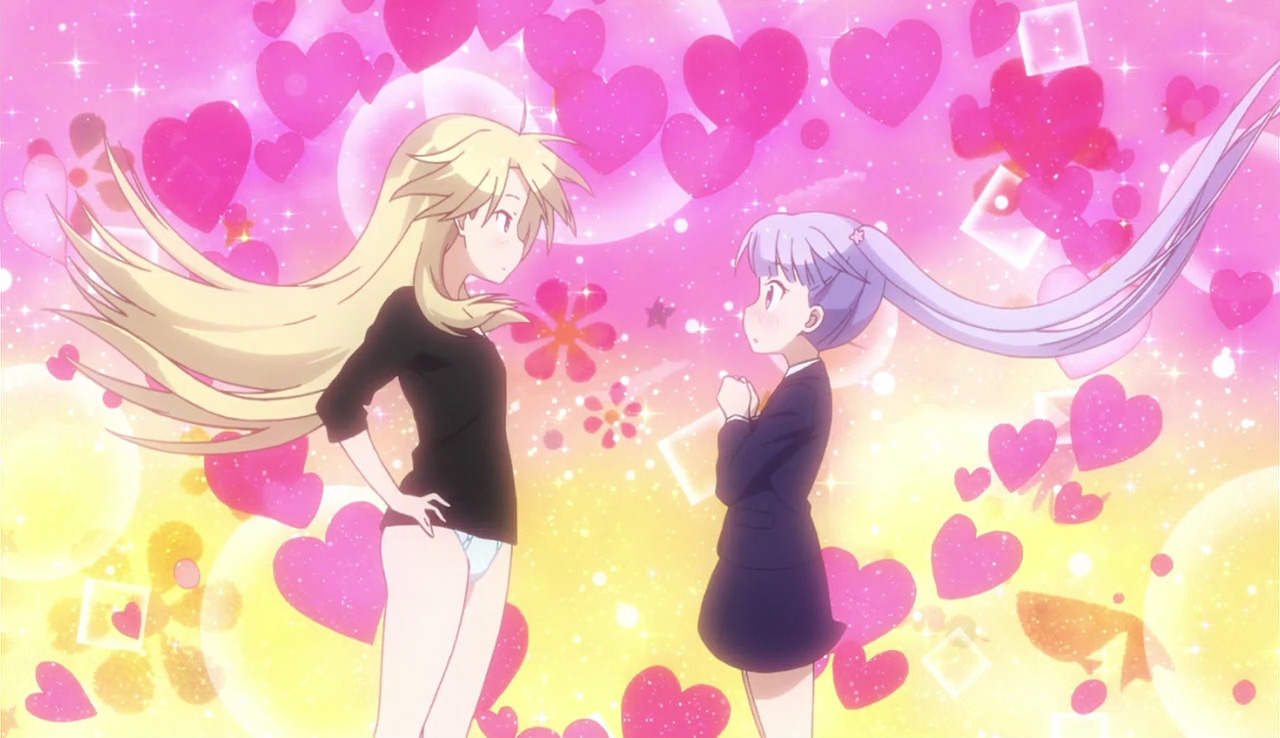
The series culminates in the completion and release of the new game, marking a significant milestone for Aoba and her coworkers. The sense of accomplishment and camaraderie among the team members is a central theme of the series.
New Game! excels in capturing the humor and camaraderie of the workplace environment. The series blends elements of comedy, slice of life, and coming-of-age themes, offering a lighthearted and relatable portrayal of life in the video game industry.
One of the strengths of “New Game!” is its well-developed characters and their interactions. The series explores the relationships between coworkers, mentors, and friends, highlighting the bonds that form in a collaborative work environment.
The series celebrates the creative process and the passion that drives individuals to pursue careers in game development. Aoba and her colleagues share a love for games and are dedicated to creating memorable experiences for players.
“New Game!” offers a refreshing portrayal of women in the gaming industry, showcasing talented and capable female characters in various roles, from designers and programmers to managers and directors. The series challenges stereotypes and promotes diversity and inclusion in gaming.
The artwork in both the manga and the anime adaptation is colorful, vibrant, and expressive. Shōtarō Tokunō’s character designs are charming and distinctive, with each character having their own unique appearance and personality traits.
The anime adaptation, produced by Doga Kobo, features fluid animation and detailed backgrounds that bring the world of Eagle Jump to life. The character expressions and comedic timing are particularly well-executed, enhancing the humor and emotional moments of the series.
“New Game!” has been well-received by audiences and critics alike for its engaging characters, humor, and heartwarming storytelling. The series has garnered a dedicated fanbase and has inspired spin-off manga, light novels, and merchandise.
The anime adaptation was praised for its faithfulness to the source material and its charming portrayal of the characters and their interactions. It introduced “New Game!” to a wider audience and contributed to its popularity both in Japan and internationally.
“New Game!” is a delightful and heartwarming series that offers a unique sneak peek into the world of video game development. With its charming characters, relatable themes, and lighthearted humor, it has captured the hearts of fans around the world. Whether you’re a gamer, an anime enthusiast, or simply enjoy slice-of-life comedy, “New Game!” is a series that is sure to entertain and delight.
Memes of the Day
Shukushou Masochism -Aru Kyoudai no Baai-
For Full Sauce search – Pixiv 103708090
OYAOYAOYAOYAKOKODON

